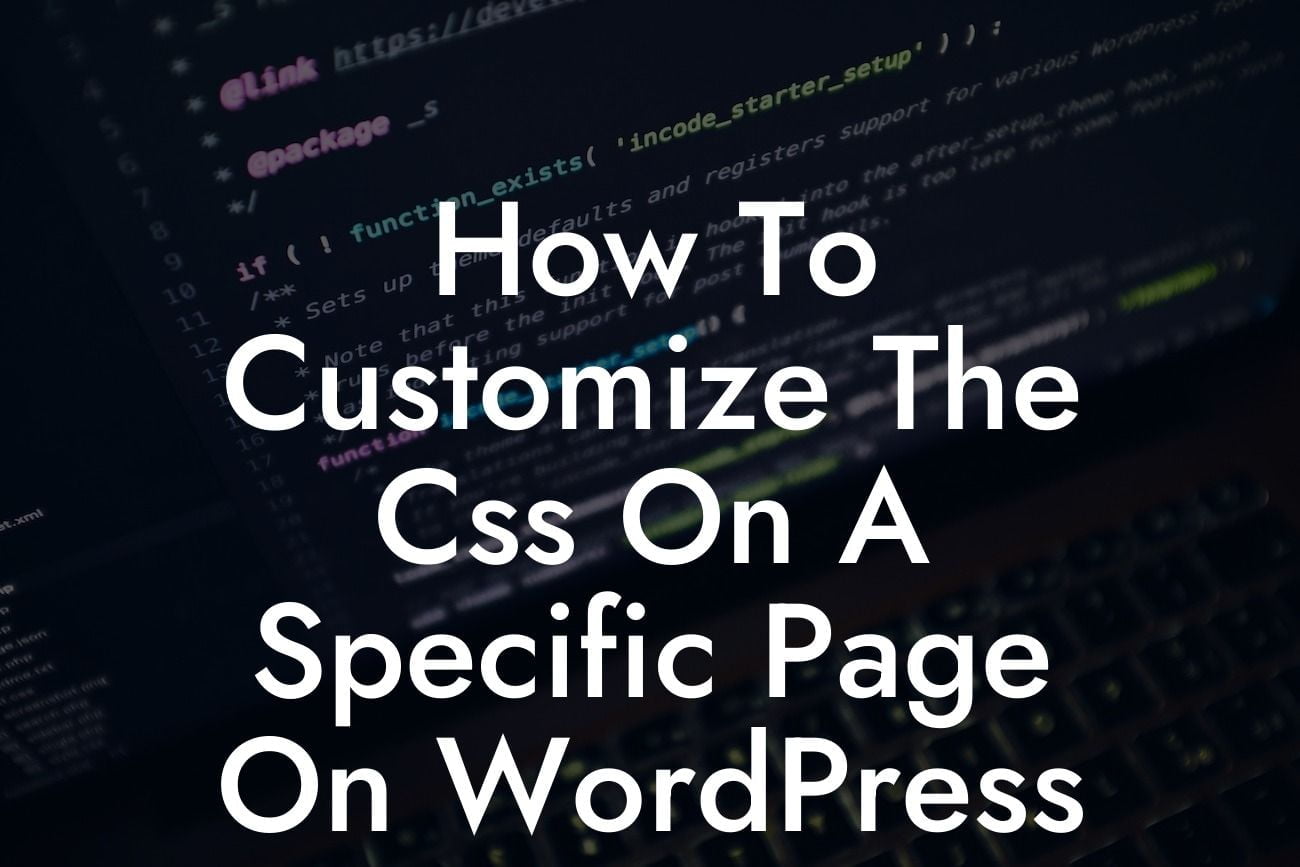Are you tired of your WordPress website looking like every other one out there? Do you want to stand out from the crowd and create a unique online experience for your visitors? Customizing the CSS on a specific page in WordPress is the perfect solution for you. In this article, we will guide you through the step-by-step process of how to easily customize the CSS on a specific page in WordPress. Get ready to elevate your online presence and supercharge your success like never before!
Following are the detailed steps to customize the CSS on a specific page in WordPress:
1. Identify the target page: The first step is to identify the specific page for which you want to customize the CSS. It could be your homepage, a product page, or any other page on your website.
2. Install a CSS plugin: To make the customization process easier, we recommend installing a CSS plugin. Some popular options include "Simple Custom CSS" and "SiteOrigin CSS." Install and activate the plugin of your choice.
3. Access the CSS editor: Once the plugin is activated, navigate to your WordPress dashboard and find the CSS editor provided by the plugin. This editor allows you to add custom CSS code.
Looking For a Custom QuickBook Integration?
4. Write custom CSS: In the CSS editor, you can now write your custom CSS code to modify the appearance of the specific page. Use suitable H2, H3 headings, bullet point lists, and ordered lists to organize your code and make it more readable.
5. Target the specific page: To ensure that your custom CSS only applies to the specific page you want to modify, you need to target it using the page ID or class. Add appropriate CSS selectors to your custom code to target the desired page.
How To Customize The Css On A Specific Page On Wordpress Example:
Let's say you want to customize the CSS on your product page. Using a CSS plugin, you can easily add custom CSS code to change the font, color, and layout of the product details section. You can target the product page by using its unique page ID or class, ensuring that your custom CSS modifications only affect this specific page.
Congratulations! You've learned how to customize the CSS on a specific page in WordPress. By taking advantage of DamnWoo's expert tips and awesome plugins, you can create a unique online presence that sets you apart from the competition. Don't forget to share this article with others who could benefit from these valuable insights. Explore other guides on DamnWoo to discover more tips and tricks. And lastly, why not try one of our incredible WordPress plugins to take your website to the next level? Happy customizing!













